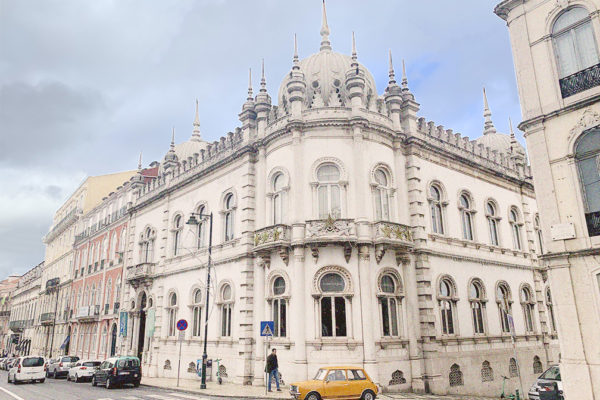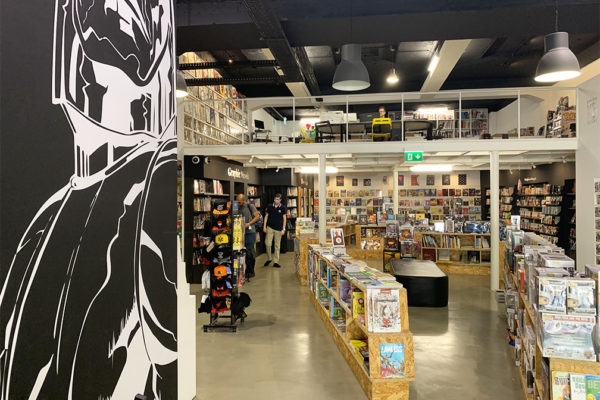Tiago tells us all about his art, his techniques and the life of his studio. It's a place for sharing, where there's plenty to talk about and plenty of inspiration. I won't tell you any more, as I prefer to leave the talking to Tiago:
What do you do in this workshop?
I'm a painter and I do quite a lot of ceramics and sculptures. I'm not strictly speaking a ceramist, but I like to sculpt the material, and I also draw.
You teach courses. Do you teach every week?
I teach sculpture and modelling clay, but not large or wooden sculptures, as I'd like to work in wood but don't have enough space.
How many students do you have?
Now I have four and some are French, some are Portuguese. Which is interesting because it brings in different people from different backgrounds. The teacher's experience is always enriching. I learn a lot from my students, and each student brings his or her own experience.
Can you tell us about these black and white works?
It's scratch, I like to sculpt and even on paper. The surface is completely black and then I scratch the surface with a pin, needle or chisel.


Is it like linography?
In a way, but the medium is simply paper, with a specially designed cardboard box. This is the principle of transfer printing. It's usually done for scientific illustration, it's a simpler technique than etching and it gives an etched effect.
And what type of art is it, since some of the pieces are very close to Egyptian art?
My work is a bit cross-disciplinary, so I use all kinds of art in my work, like film and literature. I bring influences from multiple arts and I often include them in my work. It's a way of seeing the world, it's my way of seeing the world. My job is to pass on my work and I like all techniques. Sometimes I use charcoal chalk, clay, encaustic or pigments. I make tempera pieces, which is the oldest painting technique. The Romans and the Egyptians under the Roman Empire used tempera painting, as in the Fayum portraits, which are Egyptian funerary art. These faces, painted in antiquity and found in the Fayoum region of Egypt, were made using this technique. It's a very ancient technique and I really wanted to use sustainable materials like encaustic and natural pigments. These materials are much less toxic than today's materials such as clay and natural glue.
Do you like old-fashioned techniques?
I like stable techniques like paper and wood. I don't use resins and plastics, I want to make my work as eco-sustainable as possible, there's enough pollution in the world. I like the strength of vulnerable art and I want to see my fingerprint or footprint on the work.
Just looking at your work shows that you love to use your hands.
Exactly, that's the essence of my work. When you're a sculptor, you have to touch the piece, you have to draw it, and then you have to make it in three dimensions. You also conceptualise the environment around the sculpture. Before making the work, you need to have a sense of space, because it's a 3D object, and size also plays a part. You can see it from different angles, which changes its impression. The effect can be different depending on where you stand around the work.
Looking at your sculptures, you'd think they were at peace, very calm.
Yes silent, maybe you're right because I like people who meditate and keep quiet. It's the story of the integrity of the person, it's all the possibilities of our journeys in our heads. It's like a dream, you can dream about this piece. I ask myself the question: how do you represent a dream in a sculpture? This state of mind helps me.
As you talk about literary inspiration, do you work on imagination through stories?
I really like the stories of Jules Verne or Jonathan Swift, like Gulliver's Travels. These stories stay with me like a thread, and I mix them with other stories, so it's like an imaginary recipe that takes shape. Like the work "Les lunes", which I made from clay and then waxed at the end, which looks like stone, when in fact it's just clay.
Some of my works are figurative, others more abstract, others more architectural, others more symbolic. In fact, it all depends, they are works from different eras. It's transversal because it's my life, it's the way we keep changing, evolving like the works. We change in our tastes and in our art.
Do you work more with sculpture or painting?
Both and I also use paper, I scratch the paper, sometimes I glue the paper. Sometimes I find wood in the street and reuse it as a recycled object. My work concerns everything around me, people, things, films. I create stories and even though my works may seem to have the same theme, they have no connection with each other. They are stories and each one tries to tell its own story. Everyone can create their own hypothetical story.
What are you working on at the moment?
I'm modelling a human body. I'm making proposals now, it's early days, just to see. I'm also taking inspiration from old books, academic books are always useful. I don't reject the academy. I'm a contemporary artist, but I can't reject old techniques and old knowledge. Like writers, you have to know the classics to have contemporary writing, otherwise you just start writing in a realistic way that loses meaning. That's my point of view, I think we should create with substance.
OK, a bit like the fine arts! Don't you work in isolation like some artists?
Art is very solitary work. We need to isolate ourselves in the work, even if you have people around you, it's very solitary. Artistic isolation is interesting because while you're creating, you can meditate. Art requires meditation, it's a good practice that I do every day.


